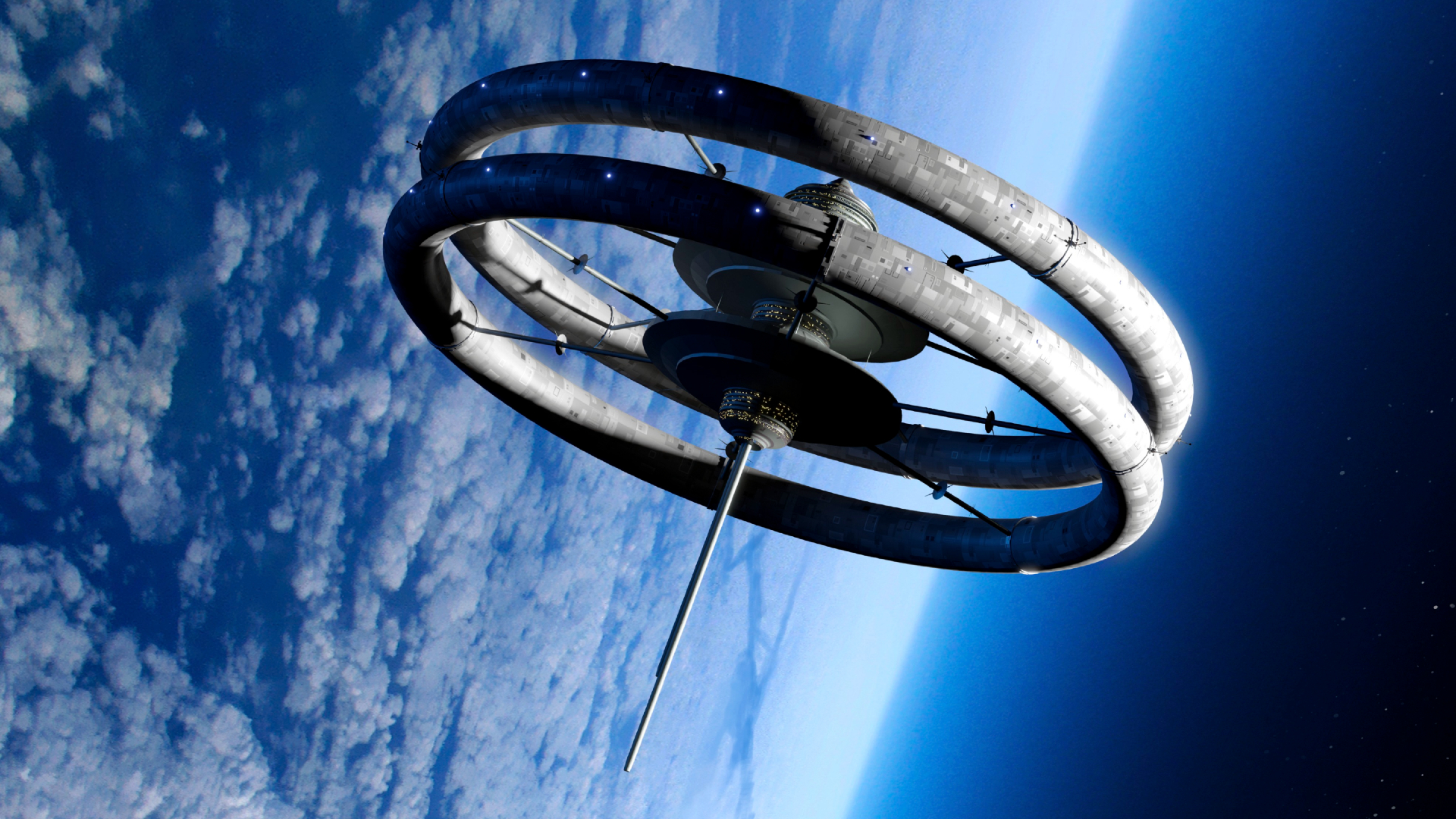Migrating Planets May Have Kicked Asteroids Into Orbit
Gas giantplanets that migrated early in the history of the solar system could haveviolently knocked some of the asteroid belt's denizens into their current orbits,according to a new study that aims to solve a number of enduring space rockmysteries.
The research,which uses a theory of the solar system's evolution called theNice model, explains why the asteroids in the outer part of the belt ?located between the orbits of Mars and Jupiter ? are so different incomposition from those in the inner part. Researchers say the model alsoexplains other oddities in the solar system: the far-out Kuiper belt beyond Neptune; the so-called Trojanasteroids of Jupiter; and the LateHeavy Bombardment of the moon billions of years ago.
"Itreally is the only model we have that can explain the solar system like we see[it]," said Harold Levison, of the Southwest Research Institute in Boulder, Colo., and lead author of the new study, which is detailed in the July 16 issue ofthe journal Nature.
The Nicemodel
The Nicemodel (pronounced like the city in France, where it was formulated), is "amodel for the dynamical evolution for the orbits of the giant planets that webelieve was a very violent event that happened roughly 700 million years afterthe solar system formed," when the solar system was in "its teenageyears," Levison explained.
Modelshaven't been able to reproduce the formation of Uranus and Neptune in theircurrent orbits, so Levison and other astronomers think that they formed muchcloser to Jupiter and Saturn, so that all the gas giants initially sat within15 AU of the sun. (One AU, or astronomical unit, is the mean distance between Earthand the sun, about 93 million miles. Jupiter currently has a mean distance of5.2 AU from the sun.)
"Wethink [the gas giant planets] formed in a much more compact configuration thanwhat we currently see," Levison said.
Breaking space news, the latest updates on rocket launches, skywatching events and more!
Aprotoplanetary disk of planetesimals stretched from just beyond that 15 AUboundary to about 30 AU, the thinking goes.
While thisconfiguration was initially stable, objects leaking out from the disk causedslow changes in the orbits of the gas giants.
Accordingto the model, about 700 million years after the solar system formed, thesechanges resulted in Jupiter and Saturn hitting a resonance with each other thatcaused the orbits of Uranus and Neptune to destabilize. The latter two planetsgravitationally scattered off each other towards Jupiter and Saturn, whichpushed back, sending their smaller siblings out to theircurrent orbits.
Like abowling ball hitting a set of pins, Uranus and Neptune plowed into the outerprotoplanetary disk, whose objects "got scattered all over the solarsystem," Levison told SPACE.com.
Here'swhere the asteroid belt comes into the picture.
Innerand outer
The asteroidbelt has a "huge diversity of objects," Levison said. The inneredge consists of bodies that have been heated and lack water or other volatilecomponents ? "they're just rocks," Levison said.
"Andin the outer part of the asteroid belt, we see things that are much moreprimitive, meaning less processed," so they posses water and organics, headded.
Theoriginal explanation for this diversity was that some rapid change in theoriginal protoplanetary disk of the solar system must have occurred in thevicinity of the asteroid belt. But the Nice model suggests otherwise.
"Essentiallywhat we're saying is that interpretation might not be right, that at least thereally primitive objects in the outer asteroid belt probably formed muchfurther away from the sun, and were embedded there during the violent stages wethink occurred in the orbits in the planets," Levison said.
So theasteroids seen today in the outer edge of the asteroid belt originally camefrom much farther out in the solar system and so have retained their water iceand other signatures, while the asteroids in the inner portions were natives tothe belt region.
Kuiperbelt, Trojans and bombardments
The Nicemodel also explains some other oddities in the solar system, such as the"Trojan asteroids" of Jupiter.
Theseasteroids sit in the Lagrangepoints of Jupiter (points where gravity wells collect and hold on todetritus).
"Rightnow in the solar system, there's a fence around the Lagrange points; things inthem can't get out and things from the outside can't get in," Levisonexplained. But when Jupiter and Saturn fell into resonance, "that fence,or that wall, goes away" and the planetesimals scattered by the violentplanetary changes fell into the wells.
The modelcan match the number and placement of the Trojan asteroids. "No othermodel's been able to do that," Levison said.
The Nicemodel can also explain the structure of the Kuiper belt, which is locatedbeyond the orbit of Neptune, Levison added.
Thescattering of planetesimals all over the solar system could also be the sourceof the proposed Late Heavy Bombardment of the moon and Earth.
Many impactfeatures on the moon are very old and originated much earlier in the history ofthe solar system when wayward rocks were more common. But as the solar systembegan to take shape, there were fewer of these migrants flying around. Which iswhy explaining impact features on the moon that appear younger was difficult ?where would the impactors have come from?
The releaseof the planetesimals about 700 million years after the formation of the solar systemroughly matches the dates given to these lunar basins of about 3.8 billion to3.9 billion years ago (though some scientists dispute these dates).
"Sothe Nice model gives us that too," Levison said.
His team isworking on looking for more solar system features to see if the Nice model alsoprovides an explanation for them. The model is increasingly gaining acceptanceamong astronomers, but Levison encourages rigorous testing of other models as theonly way to be sure that the Nice model is the best fit for the solar system.
- Video: Killer Comets and Ominous Asteroids!
- Trading Cosmic Places: Neptune and Uranus Swapped Spots
- Images: The New Solar System

Andrea Thompson is an associate editor at Scientific American, where she covers sustainability, energy and the environment. Prior to that, she was a senior writer covering climate science at Climate Central and a reporter and editor at Live Science, where she primarily covered Earth science and the environment. She holds a graduate degree in science health and environmental reporting from New York University, as well as a bachelor of science and and masters of science in atmospheric chemistry from the Georgia Institute of Technology.
